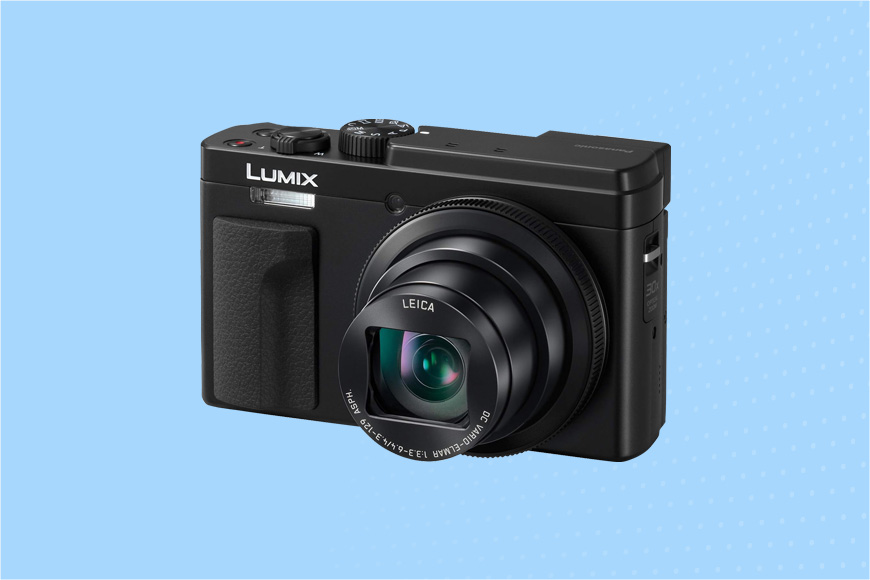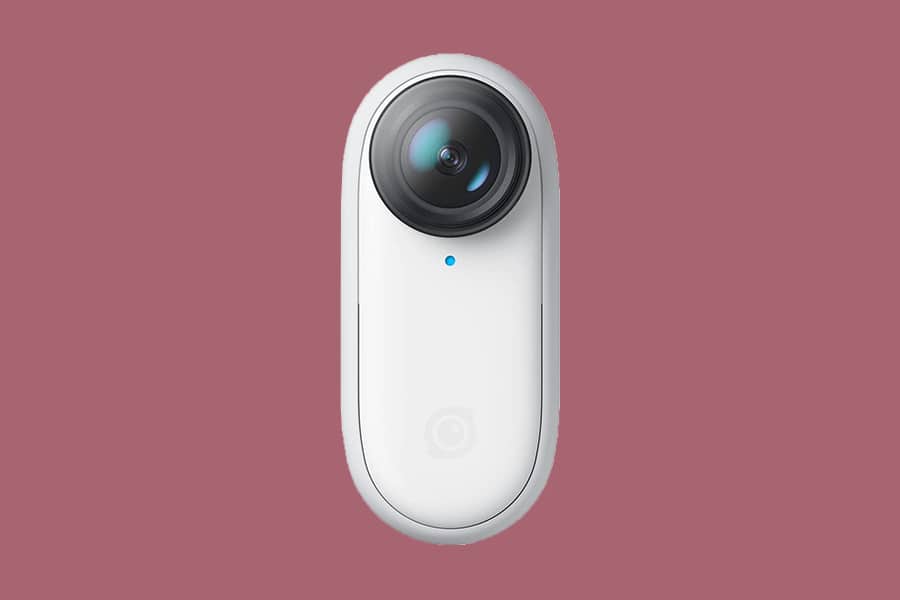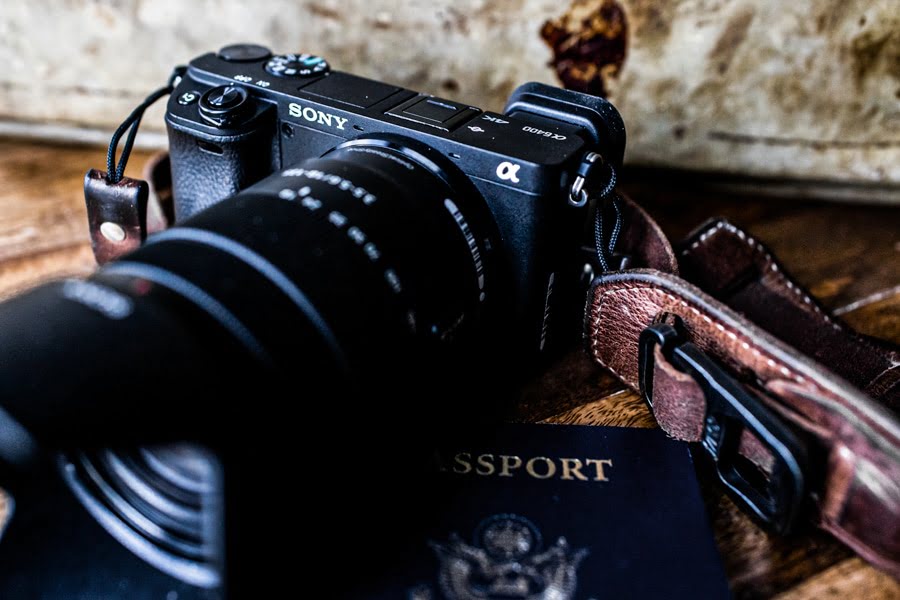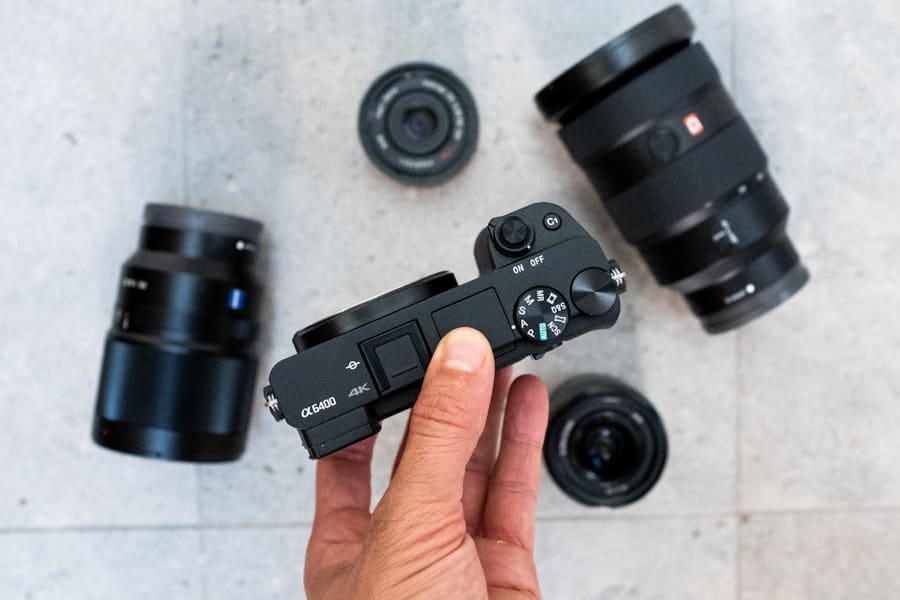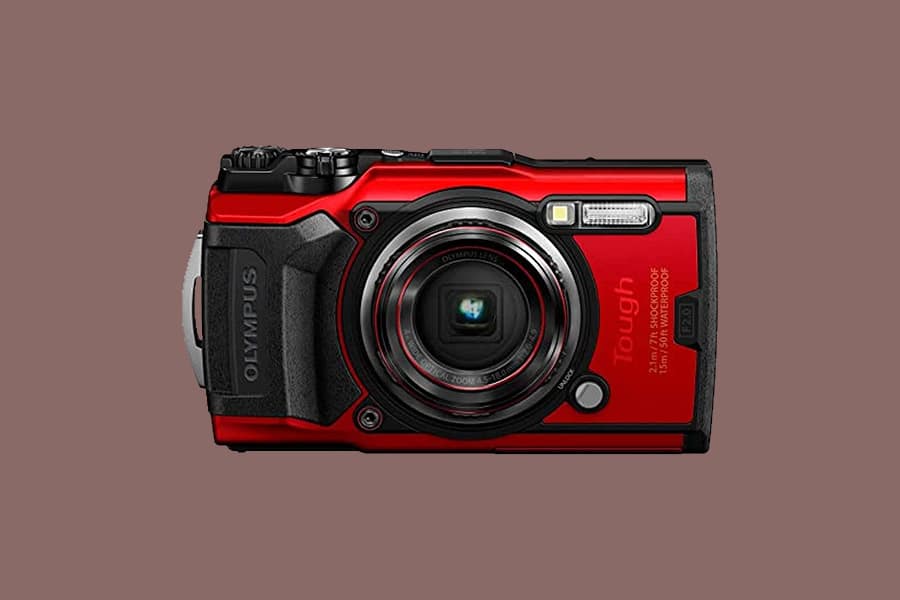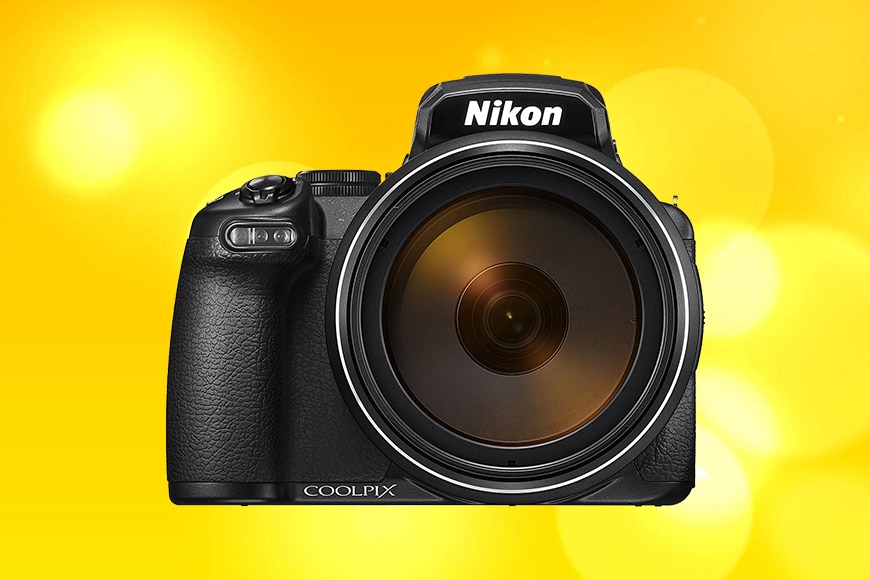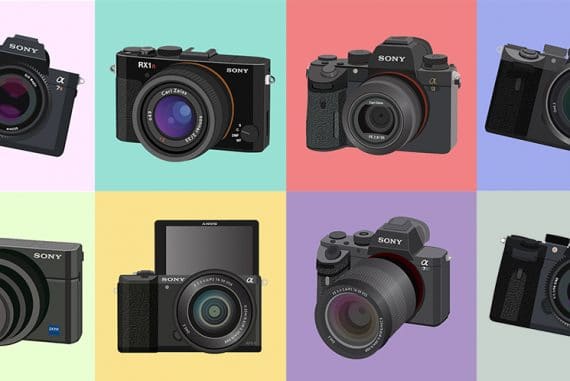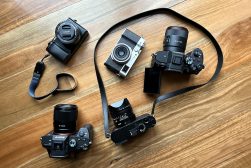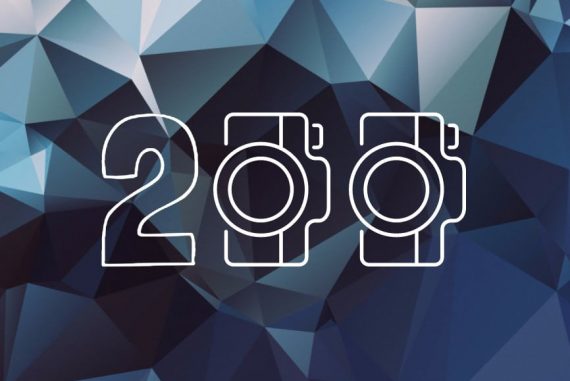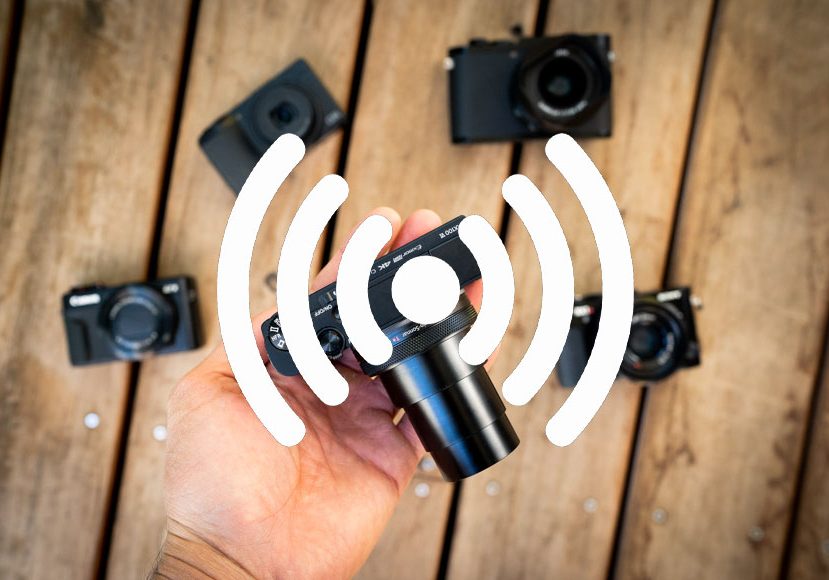
Best Digital Cameras with Wifi Connectivity in 2023
From transferring your photos and videos wirelessly to controlling your camera from afar, a camera with Wi-Fi connectivity is a useful and fun investment.
This guide will help you find the best digital camera with Wifi.
You probably already know that Wifi is a helpful feature to have on your camera.
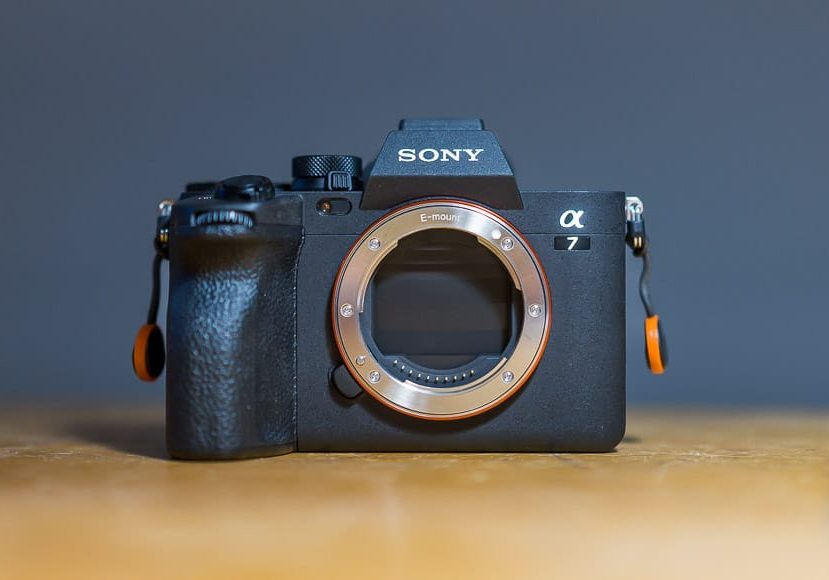
Excellent photo and video quality with class-leading autofocus, housed in a robust weather-proof camera body with fast Wifi transfer.
You can instantly transfer images from your camera to your smartphone, computer, or social media.
Not only that, a Wifi enabled digital camera is handy for taking photos.
With Wifi, you can turn your smartphone into a remote shutter control, and even control the camera’s settings.
Let’s take a look at the recommended Wifi cameras.
Table of Contents
What is the Best Digital Camera with Wi-fi Connectivity in 2023?
Sony a7 IV (Best Camera with Wifi for Professionals)
- Good price considering the features
- Tilt-screen and touch-screen
- Incredible autofocus
- Shoots 4K
- Great battery life
- Fast wifi transfers
- A little on the heavy side
The Sony a7 IV is the best Wifi-enabled camera for professionals – a high-quality, feature-packed, hybrid mirrorless camera.
It’s an extremely versatile machine, based around a 33-megapixel full-frame back-illuminated sensor.
It shoots high-resolution photos and 10-bit 4K video at 60fps.
The autofocus is incredible too. This is something Sony has become known for, and this camera is no different – just make sure to pair it with the best Sony lenses to get the most out of the glorious full frame sensor.
Fast, and intelligent, its AI-based, 749-point system can track eyes, humans, and animals in real time.
As it incorporates the Sony E Mount system, not only do you have access to the huge range of native lenses Sony offer, but also a vast array of compatible lenses from third-party manufacturers.
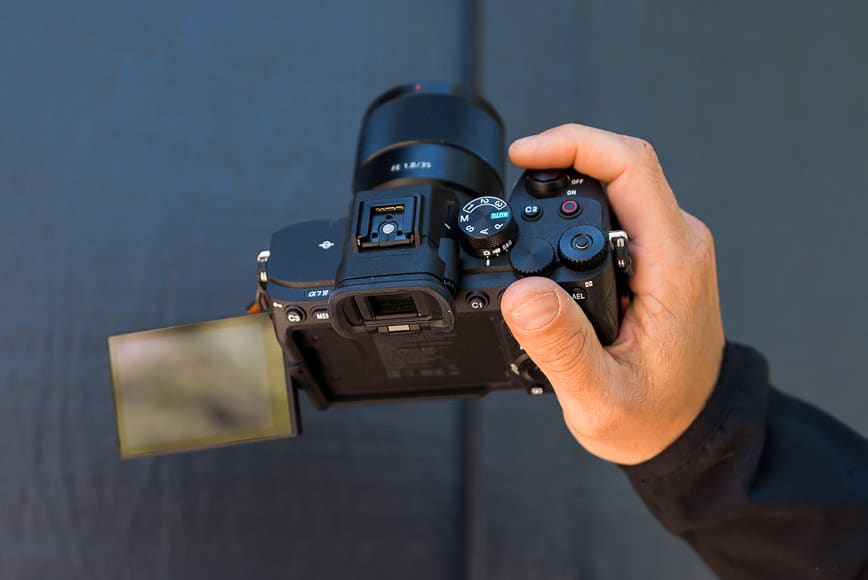
The flip screen can be faced forward making it a great camera for vlogging | Marc Bergreen
Although the Sony a7 IV is meant for professionals, that doesn’t mean it’s a difficult camera to use.
The button layout on the camera’s body is well-thought-out and customizable, and the menu is easy and intuitive to navigate (not something that Sony used to be good at) using the touchscreen interface.
It has dual CF card slots and plenty of ports (full HDMI, headphone jack, USB-C, etc) for either file transfer, or rigging the camera out with external accessories.
With its Wifi capabilities, it can also be paired with Sony’s Imaging Edge app to control the camera settings remotely. Pictures are transferred quickly and easily to be shared on social media or with friends and family.
Panasonic LUMIX ZS80 (Best Cheap Point-and-Shoot Camera with Wifi)
- Very affordable
- Compact and lightweight
- Simple layout
- Tilt-screen
- No external mic port
- EVF is a little small
The Panasonic LUMIX ZS80 is a compact camera with good image quality that is great value for money.
It has a 20-megapixel sensor and in-camera image stabilization which is a great help for capturing sharp photos and video.
That’s especially helpful because the Leica DC Vario-Elmar lens is a 30X optical zoom lens, equivalent to 24-720mm at a variable aperture of f/3.3 – f/6.4.
It would be easy for the image quality to get shaky at 720mm and f/6.4, but the camera does a good job of it.
A nice addition, in particular for sunny day shoots, is the electronic viewfinder, something that’s definitely not standard for compact cameras.
It has good battery life, a user-friendly touchscreen menu, and good autofocus.
It also gives you some great creative modes such as portrait, macro, and a particularly good panorama mode.
Pair the camera with the LUMIX Sync app, and you’ll be able to transfer images to and operate your camera from your phone.
Canon EOS Rebel T7 (Best Budget DSLR with Wifi)
- Affordable
- Streamlined
- Ergonomic grip
- Great optical quality
- Kit lens is poor quality
- Not the best for video
The Canon EOS Rebel T7 is the world’s bestselling camera, and our pick for the best budget DSLR with Wifi.
It’s the ideal camera for travel or daily use, as it feels and handles like a traditional DSLR, but is closer in size to a compact camera.
The Canon EOS Rebel T7 is made to just pick up and shoot. The layout of the buttons on the camera’s back is very simple, and there’s a single mode selection dial on top.
But just because it’s cheap and simple, that doesn’t mean it lacks firepower.
It has the same 24-megapixel APS-C sensor that’s found in many of the higher-tier cameras, up to the EOS R10. The image files are also 14-bit RAW, the same quality you’d find in much more expensive cameras.
It also opens up the door to all the amazing Canon EF lenses – the widest selection of any camera brand, with plenty of budget options to suit the T7’s APS-C sensor.
And you can control it all over the camera’s built-in Wifi from Canon’s EOS Camera Connect app.
Sony ZV-1F (Best Vlogging Camera with Wifi)
- Side-articulating screen
- Compact
- Great lens
- External mic port
- Can’t change lenses
- Only shoots jpeg
Weighing in at only 256 grams, the Sony ZV-1F is a compact camera about the same size as an iPhone, which is ideal for vloggers and other shooters on the go.
You can shoot images at 16fps, which is ridiculously fast, and means that there’s very little you won’t be able to capture.
As it’s specifically designed for vlogging, video is where this camera really shines.
The video and audio quality is great, and there’s a for attaching an external mic. There’s also a side-articulating screen, so you can see yourself.
It shoots 120fps in Full-HD, so you can get your slo-mo on. There’s no 4K video, but to be honest, for vlogs, you really don’t need footage of that resolution.
With its 20mm f/2 fixed lens, it provides you with a wide enough perspective to fit in everything you want, while not being too wide to restrict you from being able to shoot in a more intimate way.
The camera turns on quickly, and it’s very easy to use, with few buttons and Sony’s classic quick menu, which is accessible through the touchscreen on the back.
The ZV-1F has seamless wireless transfer for transferring videos and photos to your phone. It’s so good that it almost feels like your camera is part of your phone.
It can also be accessorised with the Sony Vlogging Handle, which doubles as a wireless remote and a tripod: a really handy extra for filming yourself.
Insta360 Go II (Best Action Camera with Wifi)
- Pro Mode FlowState image stabilization
- Small and lightweight
- Hyperlapse Video Mode adjusts itself to the speed of action
- Battery life more than doubles when used with the charger
- No 4K video
- 32 GB internal SD card is limiting
At just 53mm high and 24mm wide, the Insta360 Go II is the smallest action camera on the market today.
It comes in a case that has foldable legs that turn it into a little tripod, and that also has the camera’s menu for controlling it.
The case is also the charger, and if you use the charger with the camera you more than double the amount of recording you can do: 150 minutes compared to 60 minutes without the charger.
As it’s magnetic, you can stick the Insta360 Go II to something metal, or to the pendant that comes with the camera, to fasten it to your chest. Bear in mind when using the pendant, it’s not the strongest magnet.
Thanks to its size it’s an extremely portable, extremely unobtrusive action camera to take with you on your adventures.
And that high-resolution footage will be smooth, thanks to Insta360’s FlowState Image Stabilization, and steady, thanks to their 360-degree horizon lock that keeps horizons level.
Update: The Insta360 Go III was released after this article was published – I encourage you to check it out here.
Sony a6400 (Best Compact Camera with Wifi)
- Reliable, fast autofocus
- Doesn’t overheat
- Great build quality
- High-quality RAW files
- Outstanding autofocus
- Eats through batteries
- Flip-up screen gets in the way of the mic
- No in-body image stabilization
- Doesn’t come with a battery charger
The Sony a6400 is a compact camera with an APS-C 24-megapixel sensor and the ability to shoot at 11fps, which is enough for sports, and anything else you can throw at it.
The files it produces are top-notch too. 14-bit RAW images, which gives the camera great low-light performance, even when shooting at high ISOs.
Sony pairs these high-quality files with a good range of cinematic profiles, so you can get the most out of your files out-of-camera.
It has a flip-up screen, although this can get in the way if you have an external mic, so the best way to avoid that is by using a camera cage – see other cameras for vlogging with flip screens.
The a6400 is also one of the few compact cameras with a viewfinder, which makes it helpful for shooting on bright days when it’s dificult to see the rear LCD screen.
It shoots 4K super-sampled from 6K – so, extremely high-quality footage, and it can do Full-HD up to 120fps, so slow-motion footage is a breeze too.
Unlike many video-capable cameras, there’s no recording time limit. This is really useful for shooting events where having to restart recording can be a problem, for example, weddings, or conferences
The Sony a6400 doesn’t have in-body image stabilization, so make sure you pair it with one of Sony’s image-stabilized lenses.
Olympus Tough TG-6 (Best Underwater Camera with Wifi)
- Robust
- Compact
- Easy to use, even underwater
- Fast shutter speed
- 4K video
- Small sensor makes it struggle in low light
- Battery life could be better
It’s difficult to shoot good-quality images underwater without needing to invest in underwater housing for a DSLR or mirrorless camera.
Olympus offers a wallet-friendly way to get those underwater shots with their waterproof, drop-proof Tough TG-6, which has the style and ergonomics of a point-and-shoot camera.
It’s fronted with an f/2 anti-glare wide-angle lens, with a 4X optical zoom, giving you the equivalent of 25-100mm in focal length.
This lens is both good for fitting in the whole width of underwater scenes, and zooming in to the action.
Connecting the Tough to your smartphone via Wifi is relatively painless, and it’s great to be able to share your underwater shots straight after coming back from a dive.
Its sensor is not the biggest, at just 12 megapixels, but it’s perfectly fine for most of what you’d need this camera for – shooting in bright light, on sunny days, and not in low-light conditions.
The Olympus Tough t-6 shoots up to 20fps, which is blazing fast, and great for capturing watery things at the pool, like splashes, dives and jumps.
It can also shoot 4K video at 30fps and Full-HD at 120fps.
Nikon P1000 (Best Zoom Camera with Wifi)
- Huge focal range
- Robust build
- Can shoot 4K
- Image stabilization
- Small sensor, not best in low light
- Battery has to be charged in-camera
The Nikon P1000 is an absolute beast of a bridge camera – the lens is permanently attached to the camera body, but offers a flexible zoom range.
Its massive body and fixed lens are built around a 16-megapixel backside illuminated CMOS sensor, and an f/2.8 to f/11, 24mm-3000mm zoom lens. There’s also 250X Dynamic Fine digital zoom, which can take you further, to an equivalent of 6000mm.
The camera has several modes of ‘vibration detection’, which is what Nikon calls image stabilization. But, to be honest, it’s the kind of camera you’ll be wanting to use with a tripod most of the time, especially in low light.
The sensor is small, although the backside illumination will help, and ISO only goes up to 6400. If you’re shooting zoomed out all the way at f/11, you won’t have much light coming in either.
But the camera is made for sticking on a tripod and shooting aeroplanes, birds, or the moon.
And it shoots not only still but video. 4K at 30fps, and 1080p at 60fps. There’s also an HDMI output, which allows you to view your footage on a bigger, external monitor.
If connected to Wifi, you can use the SnapBridge app. This is mainly good for file transfer, and some of the camera settings. Don’t use it to zoom in and out, as this is not smooth when done from the app, and happens in increments.
Why is Wifi Connectivity Useful on a Digital Camera?
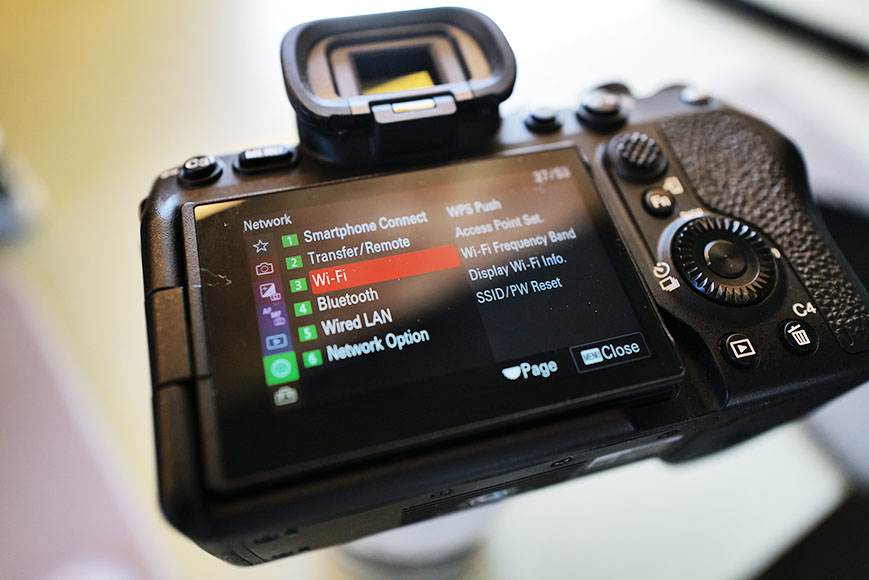
I use the Wi-Fi on my Sony a7 IV regularly to transfer photos wirelessly to my phone for Instagram uploads.
Personally, I love having Wifi connectivity on all my cameras – from my Fujifilm X100V to my Sony a7IV.
Here are some reasons why I consider Wi-Fi connectivity such a valuable feature on a digital camera:
Remote Control
Wi-Fi connectivity allows you to control your camera remotely using a smartphone or tablet. This can be especially useful when taking group shots, self-portraits, or wildlife photography where you want to minimize disturbance.
Instant Sharing
With Wi-Fi, you can instantly transfer photos and videos from your camera to your smartphone or tablet. From there, you can quickly share them on social media, email, or other digital platforms, without needing a computer.
Quick Backup
You can use Wi-Fi to backup your photos and videos to a cloud storage service, ensuring they’re safe even if something happens to your camera or SD card.
Some cameras even allow for automatic backup when connected to a Wi-Fi network.
Tethered Shooting
For professional photographers, Wi-Fi allows for tethered shooting where images can be instantly viewed on a larger screen, like a tablet or computer.
This helps photographers evaluate images in greater detail and make necessary adjustments.
Geo-Tagging
Some camera apps use the GPS of the connected smartphone to geo-tag photos over Wi-Fi, providing location data for where each photo was taken.
Firmware Updates
Wi-Fi connectivity makes it easier to keep your camera’s firmware up-to-date. Some cameras can download and install updates directly over Wi-Fi, without needing to connect to a computer.
What If You Can’t Buy a WiFi Digital Camera?
If you can’t buy a camera with built-in Wi-Fi, there are still several methods you can use to achieve similar results:
Use a Memory Card with Wi-Fi
Certain SD memory cards come equipped with their own Wi-Fi capabilities. They can create their own Wi-Fi network that you can connect to with your phone or computer to transfer files. Eye-Fi was a company that produced SD memory cards with Wi-Fi capabilities but ceased business in 2016. However, you may still be able to find some online.
USB Cable Transfer
You can directly connect your camera to your computer using a USB cable for file transfer. Although it’s not as convenient as Wi-Fi, it’s a reliable way to get your photos and videos onto your device.
Card Reader
If your camera uses SD cards or a similar removable storage medium, you can use a card reader to transfer files. Card readers can be plugged into your computer or sometimes directly into your smartphone.
Bluetooth
Some cameras that do not have Wi-Fi may still have Bluetooth capabilities. While it’s slower than Wi-Fi, it can be used for transferring smaller files or controlling certain camera functions. If I’m in a location that already has a Wi-Fi network, I usually use the camera’s Bluetooth instead so the camera won’t try and connect to the existing Wi-Fi.
Tethered Shooting
While typically used in professional settings, tethered shooting can also be used as an alternative. This involves connecting your camera to a computer or monitor via a cable, allowing for real-time viewing and file transfer. Editing software such as Capture One offers an intuitive tethered workflow for professional photographers.
What are the Best Mobile Apps for Wifi Transfer?
All the following mobile apps are available for iOS and Android cell phones and can be downloaded and used free of charge:
- Canon: Camera Connect
- Fujifilm: XApp
- Insta360: Insta360
- Leica: Leica FOTOS
- Nikon: SnapBridge
- Olympus: OM Image Share
- Pentax: Image Sync
- Sony: Image Edge Mobile
What’s Better: Wi-Fi vs Bluetooth for Camera Data Transfer
While both Bluetooth and Wi-Fi are used for wireless data transfers, they serve slightly different purposes.
Here’s a table showing their pros and cons:
| Feature | WiFi | Bluetooth |
|---|---|---|
| Range | Longer range | Shorter range |
| Data Transfer Speed | Faster | Slower |
| Bandwidth | Higher | Lower |
| Power Consumption | Higher | Lower |
| Interference | More susceptible | Less susceptible |
| Simultaneous Devices | Supports more connections | Supports fewer connections |
| Use Case | Ideal for large file transfer | Suitable for small files |
| Connection Setup | May require more steps | Quick and easy setup |
| Streaming | Better for streaming media | Limited for audio streaming |
| Security | Potentially more secure | Potentially less secure |
| Device Pairing | May require more effort | Easier and quicker pairing |
Generally, WiFi is more suitable for transferring large files like high-resolution photos and videos, while Bluetooth is better suited for smaller files and quick connections between devices.
FAQs about Wifi Digital Cameras
What is Wi-Fi in a digital camera?
Wi-Fi in a digital camera allows it to connect to other devices such as smartphones, tablets, or computers wirelessly. This allows for remote control of the camera, easy sharing and backup of photos and videos, and other functionalities.
Do all digital cameras come with Wi-Fi?
No, not all digital cameras come with built-in Wi-Fi. However, it’s a common feature in many newer models, especially those designed for consumers and prosumers.
Is Wi-Fi necessary for a digital camera?
While Wi-Fi isn’t necessary for a camera to function, it adds a lot of convenience. It allows for easy file sharing, remote control, and other functionalities that can enhance your photography experience.
Does Wi-Fi drain the camera battery faster?
Yes, using Wi-Fi does consume more battery power. To conserve battery, you should turn off the Wi-Fi feature when it’s not in use.
Can I transfer photos wirelessly without Wi-Fi?
Yes, some cameras have Bluetooth, which allows for wireless transfer of photos and videos, although it’s usually slower than Wi-Fi. Some memory cards also come with built-in Wi-Fi capabilities.
Can Wi-Fi on digital cameras be used for GPS and geotagging?
Some cameras and camera apps use the GPS of the connected smartphone to geotag photos over Wi-Fi. However, not all Wi-Fi enabled cameras have this feature.
How secure is the Wi-Fi connection on a digital camera?
The security of the Wi-Fi connection on a digital camera largely depends on the security of the network it’s connected to. When using public Wi-Fi, be aware of potential security risks and avoid transmitting sensitive data.

Excellent photo and video quality with class-leading autofocus, housed in a robust weather-proof camera body with fast Wifi transfer.






